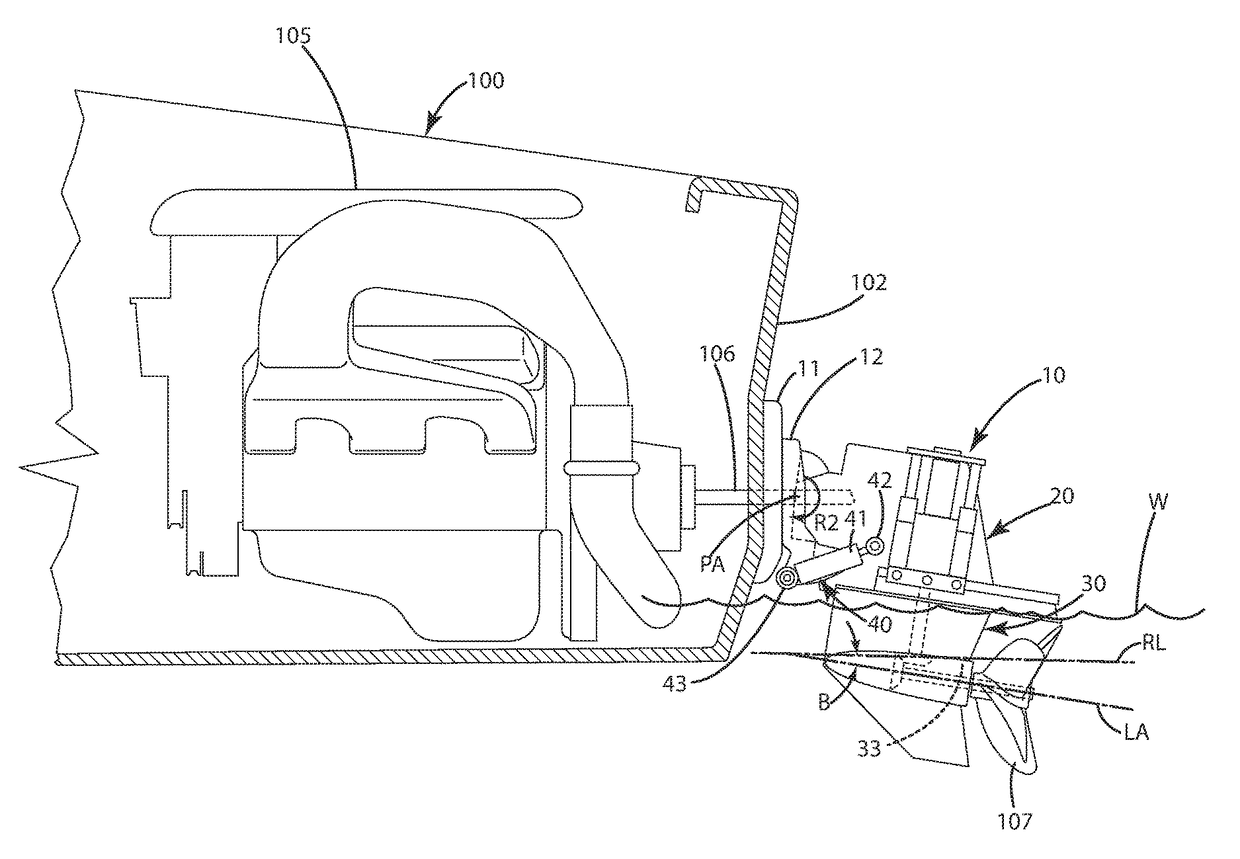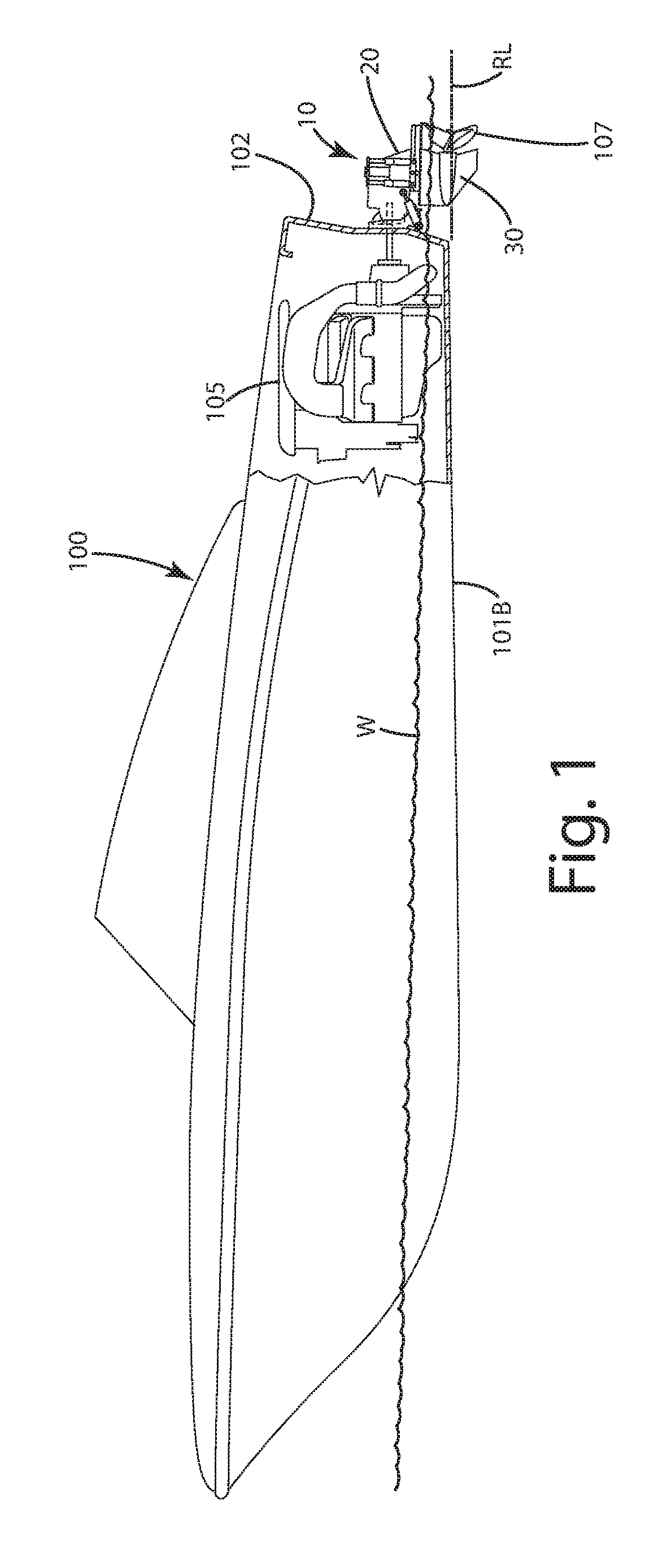Watercraft adjustable shaft spacing apparatus and related method of operation
a technology of shaft spacing and watercraft, which is applied in the field of watercraft, can solve the problems of affecting the operation of the watercraft, the angle of the propeller makes maneuvering the boat more difficult, and the vertical displacement of the propeller shaft and the propeller is generally fixed and immovable, so as to achieve the effect of reducing drag, improving efficiency and speed, and reducing drag
- Summary
- Abstract
- Description
- Claims
- Application Information
AI Technical Summary
Benefits of technology
Problems solved by technology
Method used
Image
Examples
Embodiment Construction
[0049]A current embodiment of the watercraft outdrive is illustrated in FIGS. 1-16, and generally designated 10. As illustrated in FIGS. 1-6, the outdrive 10 is joined with a watercraft 100. Although shown as a high performance boat, the watercraft 100 with which the outdrive 10 is used can be any type of marine vessel, for example, a recreational boat, a racing boat, a pontoon boat, a fishing vessel, a tanker or other type of commercial vessel, a submarine, a personal watercraft, an amphibious vehicle, an underwater exploration vehicle, or virtually any other type of vessel that is propelled through or on water via a propeller.
[0050]The watercraft 100 includes a hull 101 having a stern 104 at which a transom 102 is located. The hull 101 also includes a bottom 101B. This bottom can coincide with or include a lowermost portion of the hull. The watercraft can include a reference line RL that extends rearward from the hull 101, and in particular, that extends from the lowermost portion...
PUM
 Login to View More
Login to View More Abstract
Description
Claims
Application Information
 Login to View More
Login to View More - R&D
- Intellectual Property
- Life Sciences
- Materials
- Tech Scout
- Unparalleled Data Quality
- Higher Quality Content
- 60% Fewer Hallucinations
Browse by: Latest US Patents, China's latest patents, Technical Efficacy Thesaurus, Application Domain, Technology Topic, Popular Technical Reports.
© 2025 PatSnap. All rights reserved.Legal|Privacy policy|Modern Slavery Act Transparency Statement|Sitemap|About US| Contact US: help@patsnap.com



